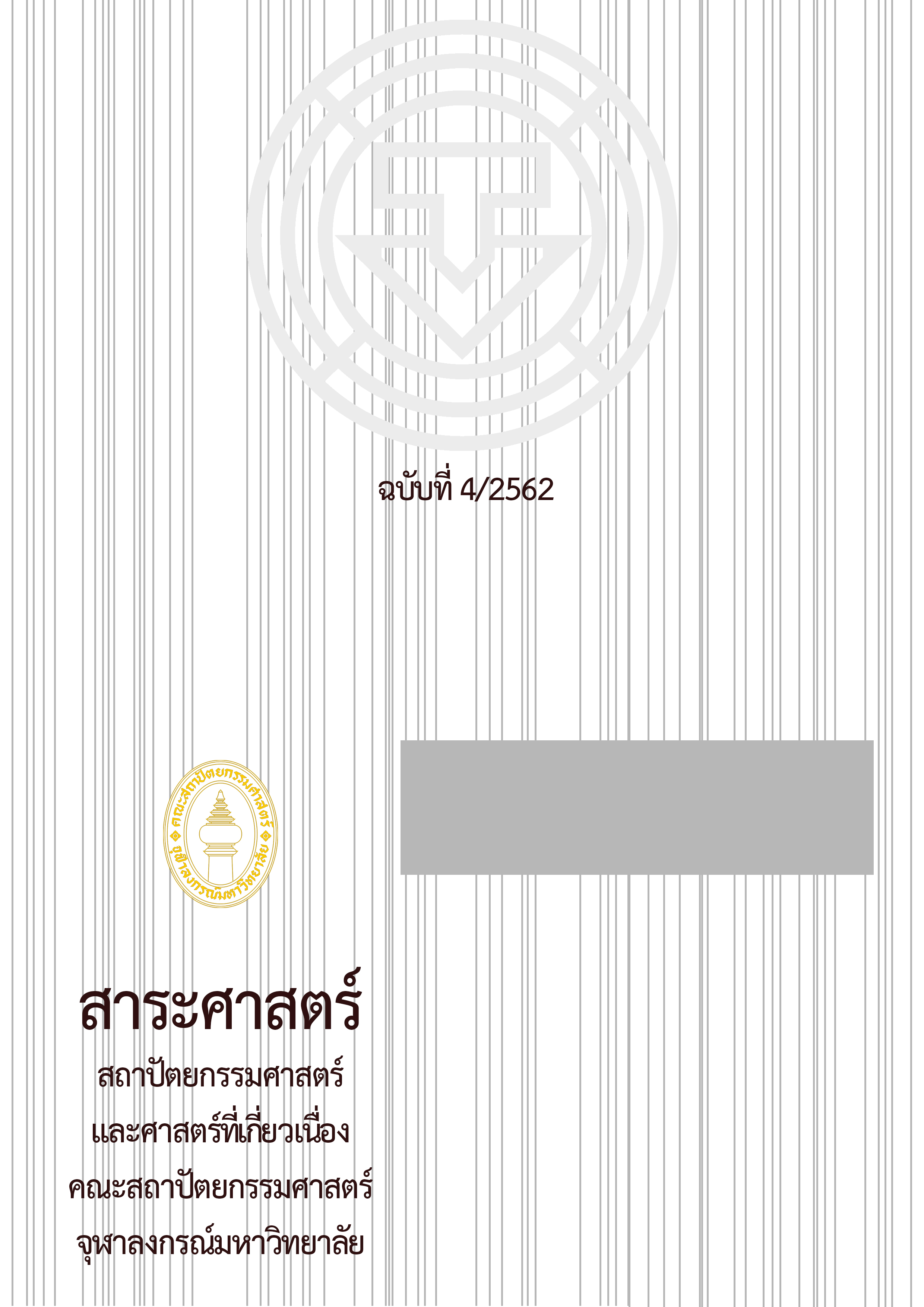Improving Energy Efficiency in Building to Net Zero Energy Building : A Case Study Standard Government Office Building
Main Article Content
Abstract
The objective of this study is to increase the energy efficiency in the standard type of government office building, which has been built in many places, by reducing the energy consumption to net zero energy consumption. The government office building has 4 floors with a total area of 7,020 square meters, divided into 2 buildings: (1) office section and (2) canteen with a meeting room at the top floor. The air-conditioned area is 1,295 square meters in total. This study was conducted through a computer program called BEC (Building Energy Code) version 1.0.6 which is developed for checking the consistency of the building model towards the standard of energy conservation in the building by Thailand Ministry of Energy.
According to the energy conservation standards from the Ministry of Energy guidelines, the Net Zero Energy Building can be archived by: (1) using 50 mm. fiberglass insulation with a density of 32 kilogram / cubic meter (kg/m3) in a solid wall, (2) using 6 mm. green reflective glass with 0.41 heat transmission value (SHGC), (3) adding a 25 mm thickness glass fiber insulation with density of 32 kg/m3 to the rooftop, (4) changing the lighting system to LED, (5) improvement of the air conditioning system, and (6) using solar energy panels with 17.1% efficiency as a renewable energy.
In this case study, the selected building has the total energy consumption of 209,091.33 kWh/year before the improvement, and reduced to 94,963.32 kWh/year after the improvement by improving solid and translucent wall, roofing, air-condition system and lighting system. The total energy consumption is reduced by 114,128.01 kWh/year (54.37%). The solar panels can produce a total energy of 147,713.84 kWh/year. Including improvement guidelines and use renewable energy from solar panels Making the overall energy consumption in the building to net zero energy. The payback period is 14.39 years with 4.87% rate of return.
Article Details
References
กระทรวงพลังงาน. “แผนพัฒนาพลังงานทดแทนและพลังงานทางเลือก พ.ศ. 2558 - 2579.” สืบค้น 20 เมษายน 2562. http://www.dede.go.th/download/files/AEDP2015_Final_version.pdf.
ชนิกานต์ ยิ้มประยูร. “อาคารใช้พลังงานเป็นศูนย์.” Journal of Architectural Research and Studies (2559): 13.
ณัฐพงศ์ สุวรรณสังข์และโสภิตสุดา ทองโสภิต. “การประเมิณศักยภาพเชิงเทคนิคและเศรษฐศาสตร์ของระบบผลิตไฟฟ้าพลังงานแสงอาทิตย์บนพลังคาอาคารในจุฬาลงกรณ์มหาวิทยาลัย.” วารสารวิจัยพลังงาน 12, 2 (2558): 59-74.
“ประกาศกรมสวัสดิการและคุ้มครองแรงงาน เรื่อง มาตราฐานความเข้มของแสงสว่าง.” ราชกิจจานุเบกษา. เล่ม 135 ตอนพิเศษ 39 ง หน้า 15. (2561, 21 กุมภาพันธ์).
“ประกาศกระทรวงพลังงาน เรื่องหลักเกณฑ์และวิธีการคำนวณในการออกแบบอาคารแต่ละระบบ การใช้พลังงานโดยรวมของอาคาร และการใช้พลังงานหมุนเวียนในระบบต่างๆของอาคาร พ.ศ. 2552.” ราชกิจจานุเบกษา. ตอนพิเศษ 122 ง หน้า 21. (2552, 28 สิงหาคม).
ปารวี ตั้งจิตวิทยา. “การออกแบบกรอบอาคารบ้านเดี่ยว เพื่อนำไปสู่อาคารพลังงานสุทธิเป็นศูนย์.” วิทยานิพนธ์ปริญญามหาบัญฑิต, มหาวิทยาลัยธรรมศาสตร์, 2556.
สัทธา ปัญญาแก้วและชนิกานต์ ยิ้มประยูร. คู่มือการออกแบบระบบผลิตไฟฟ้าพลังงานแสงอาทิตย์ สำหรับอาคารในประเทศไทย. กรุงเทพฯ: สมาคมสถาปนิกสยาม ในพระบรมราชูปถัมภ์, 2558.
สุรเชษฐ์ ณ เชียงใหม่. การพัฒนาอาคารสู่การใช้พลังงานสุทธิเป็นศูนย์ กรณีศึกษาอาคารสำนักงานของการไฟฟ้าแห่งประเทศไทย. กรุงเทพฯ: จุฬาลงกรณ์มหาวิทยาลัย, 2560.
อรรจน์ เศรษฐบุตร. อาคารเขียว. กรุงเทพฯ: โรงพิมพ์มติชนปากเกร็ด, 2561.


